Vishudh was reading an article about black and alluvial soil which says:
"Black soils are derivatives of trap lava and are spread mostly across interior Gujarat, Maharashtra, Karnataka, and Madhya Pradesh on the Deccan lava plateau and the Malwa Plateau, where there is both moderate rainfall and underlying basaltic rock. Because of their high clay content, black soils develop wide cracks during the dry season.
Alluvial soils occur throughout the Indo-Gangetic planes. The soil is generally covered by tall grasses and forests, as well as a number of crops, such as rice, wheat, sugarcane, tobacco, maize, soybean, jute, oilseeds, fruits, vegetables, etc."
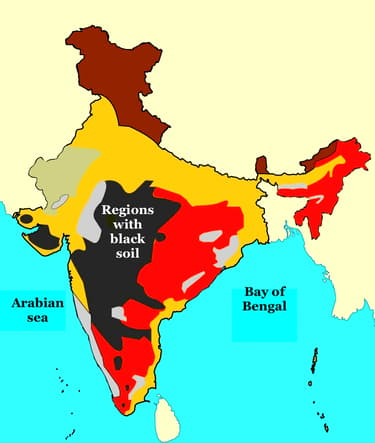
(a) Help Vishudh to identify which region on the map of India will be considered the richest in alluvial soil on the basis of the article given above?
(b) Cotton can be grown in black as well as alluvial soil. Which one is most preferred for its cultivation? Explain on the basis of the composition of both the soils.

(b) Cotton can be grown in black as well as alluvial soil. Which one is most preferred for its cultivation? Explain on the basis of the composition of both the soils.

Important Questions on Soil
Vishudh was reading an article about black and alluvial soil which says:
"Black soils are derivatives of trap lava and are spread mostly across interior Gujarat, Maharashtra, Karnataka, and Madhya Pradesh on the Deccan lava plateau and the Malwa Plateau, where there is both moderate rainfall and underlying basaltic rock. Because of their high clay content, black soils develop wide cracks during the dry season.
Alluvial soils occur throughout the Indo-Gangetic planes. The soil is generally covered by tall grasses and forests, as well as a number of crops, such as rice, wheat, sugarcane, tobacco, maize, soybean, jute, oilseeds, fruits, vegetables, etc."

(a) Help Vishudh to identify which region on the map of India will be considered the richest in alluvial soil on the basis of the article given above?
(b) Cotton can be grown in black as well as alluvial soil. Which one is most preferred for its cultivation? Explain on the basis of the composition of both the soils.
Reena and Nitin were playing at the seashore. A potter who lives nearby the shore in a small hut was using the soil and his artistic talent to create pots, vases, toys and other artifacts. As soon as they noticed him, they went to him and took some soil with themselves from the seashore. They requested the potter to create some toys for them, out of the soil which they have brought with them. To this the potter smiled, and said that this soil is not appropriate for making the toys.
a) The potter cannot make earthen toys from the soil that Reena and Nitin brought from the seashore. Can you explain why?
b) Which type of soil is most suitable for pottery?

A farmer is really frustrated with the low water retention capacity of the soil in his agricultural field. All the water poured on the field seeps underground at a very rapid pace. He is a poor farmer, and this land is the only medium for the survival of his family. His goal is to increase the soil's ability to hold water.
a) What kind of soil does he have in his agricultural land?
b) If a farmer wants to improve the water holding capacity of his agricultural soil field what would you suggest to him?
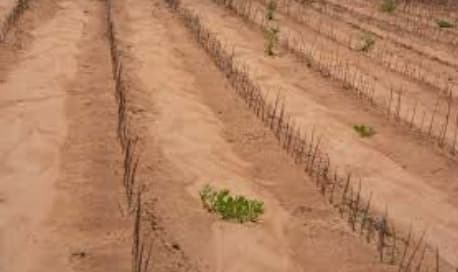
Bedrock is hard but absolutely breakable, and most of the high-rise buildings are anchored into the bedrock with structures called "foundations". It is a deposit of solid rock that is typically buried beneath the soil alongside other broken materials. Bedrock is made up of igneous, sedimentary, or metamorphic rock, and it often serves as the parent material for soil.
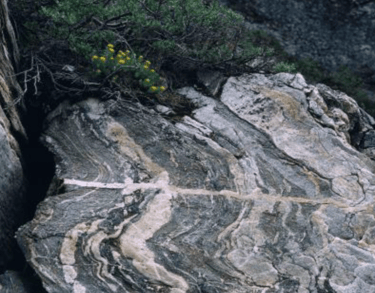
Explain the fact why soil is found at the topmost layer.
Soil is one of the most important natural resources. Soil is formed from the rocks. It provides anchorage to the plants and supplies water and nutrients. It is a home to many organisms. Soil is essential for agriculture and agriculture provides food, clothing and shelter for all. Soil is thus an inseparable part of our life.
a) If rocks had not broken down, life would not have developed on the earth. Why?
b) Discuss the factors that affect soil formation.
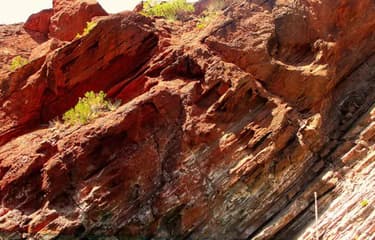
A sample of soil is taken in a funnel lined with filter paper. The funnel is placed over a measuring cylinder. At , Raksha starts to pour of water slowly on the soil. She finishes pouring all the water by . Given here are the readings of water levels in the measuring cylinder at different times.
| Time | Water level in the cylinder |
Look at the table and answer the questions below:
1. How much water (in ) was absorbed by the soil?
2. What is the percolation rate? Give your answer in .
3. Which type of soil is the sample? Sandy soil, clayey soil or loamy soil. Give reasons for your answer.
Sara and Rajiv were making soil art and craft for their school project. Their grandma suggested that the soil from the bank of their village pond would be good for creating such models. Why was grandma's suggestion useful?

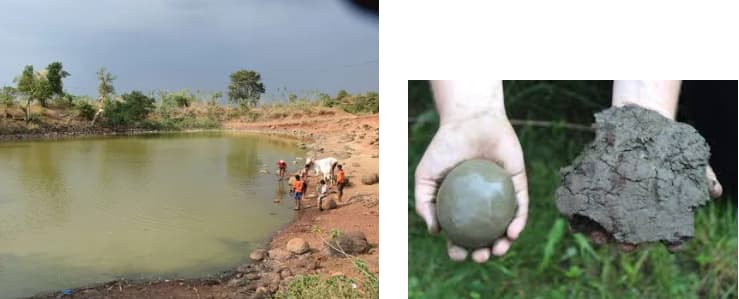
Darjeeling is the northernmost district of the state of West Bengal in eastern India in the foothills of the Himalayas, popularly known as the 'Queen of the Hills'. Ramu lives in Darjeeling and does farming there. What method of farming should he use to prevent soil from being eroded?

